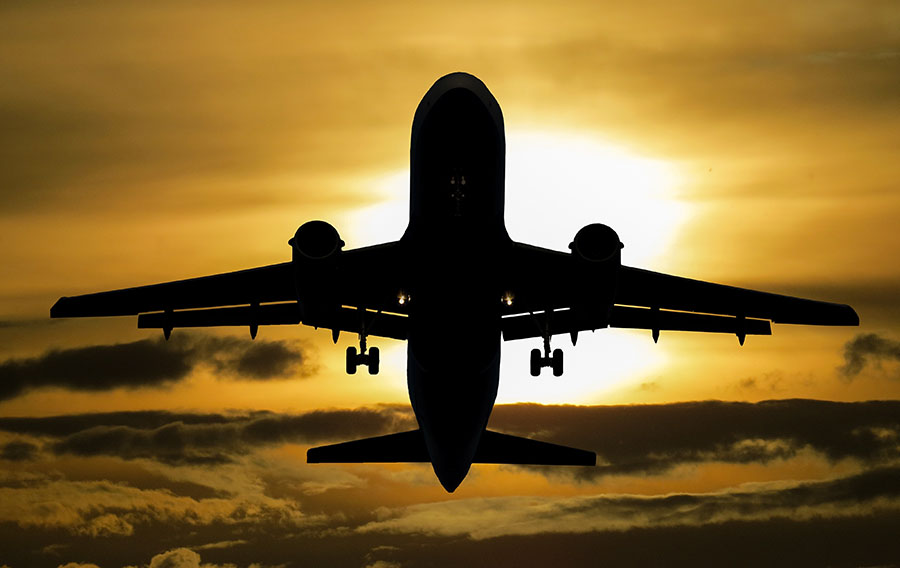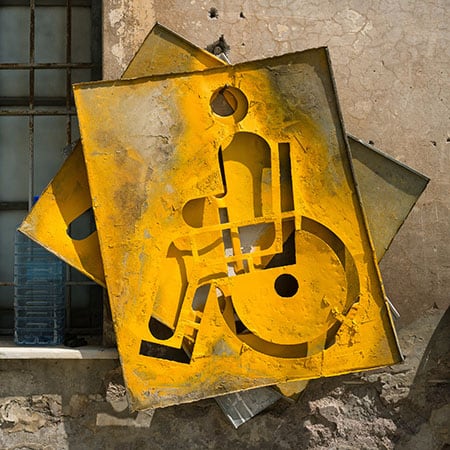
Standards of accessibility have continued to rise over the past few years, making those traveling with a disability have an easier time than ever getting to where they need to be.
Therefore, I am going to offer some tips and advice when traveling with a disability as well as also look at some of the common practices the most popular airlines have.
I will also look at different ways they make their airlines more accessible, standards of practice in different countries, and more. We’ll finish by taking a look at one airline, Delta, and seeing exactly what their specifications are so that you can have a better idea of how an airline handles accessibility.
Be Prepared
Preparation is the most important aspect to take care of when in need of accessible travel. For example, perhaps you, a friend, or a loved one have any of the following
- Peanut allergy
- Blind or low vision
- Deaf or hard of hearing
- Need wheelchair assistance
- Restricted to a stretcher
Each airline is going to have different regulations for how they handle each of the above scenarios. But it starts at the airport.First, you want to consult with TSA (if you’re in the U.S.) or your airport’s screening agency if you’re elsewhere.
It is good to gather information to be prepared for what to expect when it comes to boarding the flight. The Transportation Security Administration has a toll free helpline for those with disabilities and medical conditions which can be consulted prior to arriving.
Here I take a more in-depth look at some of the different scenarios that might be affecting you:
Service Animals
If you are going abroad, you should contact the U.S. embassy or consulate of the destination you are going to for information or restrictions or even cultural norms when it comes to service animals.
You should be well versed on quarantine, vaccination, and documentation requirements. It can also be a good idea to talk to your vet about traveling with your service animal.
Lastly, contact your airline and hotel to understand the regulations regarding your service animal as well as if the hotel can accommodate.
Assistive Equipment
Assistive equipment can be anything from wheelchairs, portable machines, respirators, oxygen, and so forth. Things to be considered include manual vs power wheelchairs, type of electrical plug, the electrical system, and so forth.
Medical Considerations
The first thing to do with medical considerations is to consult your physician prior to travel to identify what health care needs you might have on your trip so you can see which airline may be best to accommodate them.
If you are traveling overseas and your health insurance plan does not provide coverage, it may also be wise to consider supplemental medical coverage for the time being.
When traveling with medical considerations, carry sufficient medical alert information and a statement from your provider describing your condition, medications, potential complications, and so forth.
Since I’ve looked at some of the most common examples affecting people who travel with disabilities, let’s run through the steps of how to be prepared for your next trip as well as look at some general tips to help it be successful.
Getting from Point A to Point B General Tips

First, you want to call ahead. The Americans with Disabilities Act guarantees that travelers with a disability will receive equal treatment, but you need to give time for them to prepare any accommodations for the day of your flight.
This is first and foremost – typically they may need up to 48 hours to create these accommodations so it is best to call and notify as soon as possible.
It is not required for you to tell an airline if you have a disability, but if you have special circumstances such as needing a hook up to the airline’s oxygen or are restricted to a stretcher, you should let them know ahead of time.
Airport Arrival
When you arrive at the airport, many airlines will actually designate an employee to help you at curbside throughout the process of getting on the plane. You may also request assistance when you arrive.
The process of getting helped when you arrive is usually provided free of charge. If you have a service animal to help you through the airport during this process, it’s worth noting most airlines do not charge extra for this either.
Airport Security
Getting through security is similar to any other passenger. The TSA notes that there are exceptions for people that have oxygen tanks, using a cane or walker, can’t stand with their arms raised at shoulder level for 5 seconds, and so forth: the TSA may do alternate screening methods such as pat downs in these scenarios.
The key piece of advice which is universal to air travel is to give yourself plenty of time to get through screening. An extra hour or two can go a long way to ensuring you are not rushing and can get through the processes comfortably while having plenty of time left.
Boarding the Plane
After security, there is the process of boarding the plane (and eventually deboarding). Each airline must have properly trained staff to assist those with disabilities during these times.
It’s worth noting that while they can assist people in getting on and off the plane, they are not permitted to pick up or carry passengers. Regarding boarding with service animals, they are permitted to board the plane in all instances.
Service animals that provide emotional support must have documentation from a mental health or medical provider. Otherwise, they may freely board without documentation, although the airline is allowed to ask you questions to ensure it is simply not a pet.
Animals will almost always be given a seat within the same cabin but if your flight is jam packed and there is no where for an animal to go then it will be placed in the cargo hold.
If you’re wondering about the safety briefing airlines do prior to the flight, it must be provided to those with disabilities as well, and done so in a manner that is discreet. They may do it when a person pre-boards or may come to you one on one.
On the Plane
Now that you’ve boarded the plane and are ready for take off, there are a number of additional ways that flight attendants can help you make your flight as comfortable as possible. Besides helping board the flight and get to their seat, flight personnel can help make flights more accessible by:
- Helping open packages and identify food choices
- Using the wheelchair on the plane to assist in helping someone get to the bathroom
- Load and/or retrieve carry on items that are placed in the overhead compartments
Your Rights as a Traveler with a Disability
Airlines are not allowed to ask you what disability you have. However, they may ask questions to help determine in what ways they can assist someone with a disability. So if they are curious, it is only to help, and not to deny transportation or create a hassle.
If there are any issues boarding the flight, you may ask to speak with the Complaints Resolution Officer, or CRO. Airlines provide these for immediate use to resolve complaints and ensure ACAA rules are followed.
After that, you may ask for the CRO to confirm their decision with the pilot. As a final step, if you are dissatisfied with how an airline is handling a situation, you may contact the Department of Transportation.
Case Study: Delta Airlines and the Disabled

In order to get a better idea of how airlines provide accessibility for those that need it, we will look at one airline in particular, Delta. On their website, they have a section dedicated to your trip called “My Trips”.
In there, assistance can be requested for any variety of reasons, which is good because it both accomplishes what you need before you flight as well as letting them know what you need help with.
For this particular airline, they want to know prior to the flight if you have a peanut allergy, need wheelchair assistance, are blind or have low vision, or are deaf or hard of hearing.
As I just covered in the previous section, they also list that they have a CRO at every single airport who is available to help in resolving any issues that may arise during your pre-boarding process.
Delta lists services to help with accessibility in a variety of manners. First, they have a Telecommunication Device for the Deaf (or TDD), which are available at almost all airports, which can help translate phone communications into text.
The next major accessibility that Delta covers is onboard oxygen. Unlike some airlines, Delta does not provide compressed medical oxygen. They do, however, allow Portable Oxygen Concentrators (which you can find on Amazon)if you provide them notification ahead of time.
With that said, they do not allow Liquid Oxygen Tanks whatsoever. Delta does have an oxygen provider, named OxygenToGo.
Through them, you can rent a POC for the duration of your flight. If you have your own tank, they require the following steps to be completed:
After you complete your travel plans, verify that your oxygen tank is FAA approved and has 150% battery time for all of your flights put together. You must also complete a POC Battery Approval Request form with Delta at least 48 hours prior to travel.
After that, simply carry the statement with you to ensure there are no issues when boarding your flight and you are good to go. They do have a specific list of 30 or so acceptable POCs so it is worth checking with your specific airline to ensure that they are allowed.
Delta goes one step further than some airlines by having an Advisory Board specifically for promoting accessibility. The board is currently made up of 15 thought leaders from various fields, ranging from actual paralympians to those who work is involved with veteran affairs and everything in-between.
By having a diverse board of those who are leaders in their respective fields that relate to disabilities, Delta is able to ensure that it has best practice standards for its flights as they pertain to those traveling with accessibility needs.
For those with peanut allergies, by notifying Delta ahead of time, they will actually refrain from serving peanuts to anybody during your flight. Gate agents are notified so that you can board the flight beforehand and clean your area.
For those with wheelchair needs Delta accompanies all kinds of wheelchairs: foldable, electric or battery powered, carts and scooters, as well as one additional wheelchair battery.
Although I do not have a particular recommendation on any one item, you can get an idea of the cost and options on Amazon
It’s worth noting that federal regulations require these wheelchairs to have an effective method of preventing them from accidentally activating during the flight such as a key, kill switch, inserting charger, and so forth.
Final Thoughts
For those who have accessibility needs, airlines have become more accommodating than ever to ensure that they meet the needs of all fliers. They do this in part due to FAA regulations that require them to but also to stay competitive.
There are more people traveling now with a variety of disabilities that we’ve covered in this article and more, and airlines are well equipped to handle them to ensure that all passengers are able to get to their destination safely.
The most important part to remember is to always give advance notice to your airline, that way not only do they know about your disability but they can offer recommendations or let you know if there is anything specific you need, such as paperwork to comply with FAA regulations or with the airport’s own airlines.
With advanced notification, having your paperwork in order, checking your airline’s website for specific tips, discussing your needs with your doctor and travel agent, and giving yourself plenty during the day of travel, traveling with a disability has been made easier than ever in today’s world.

